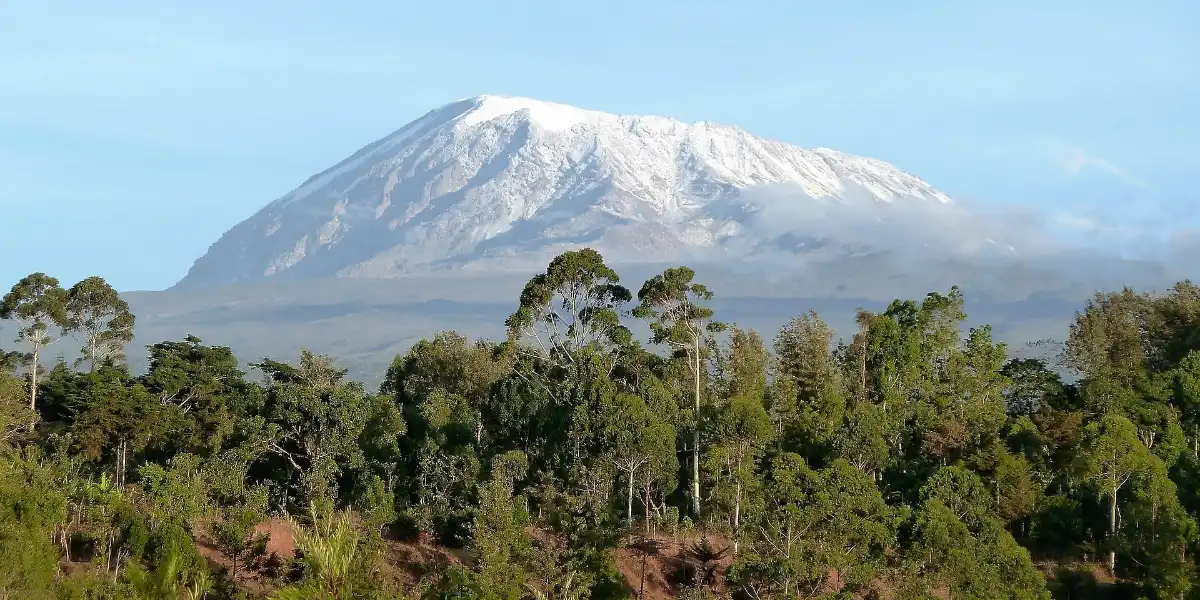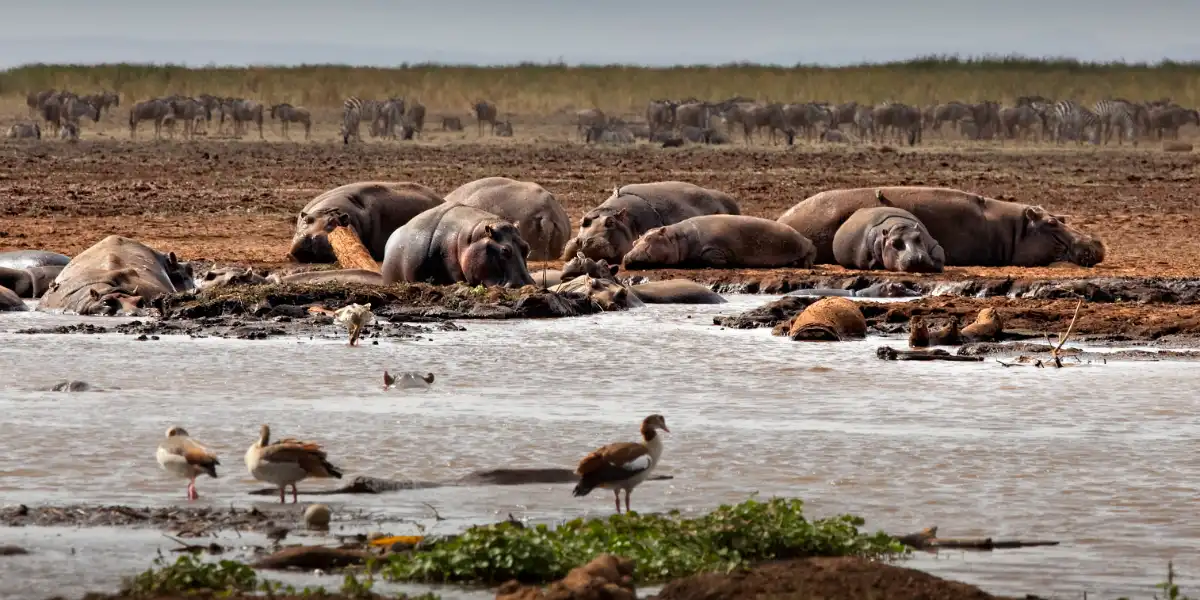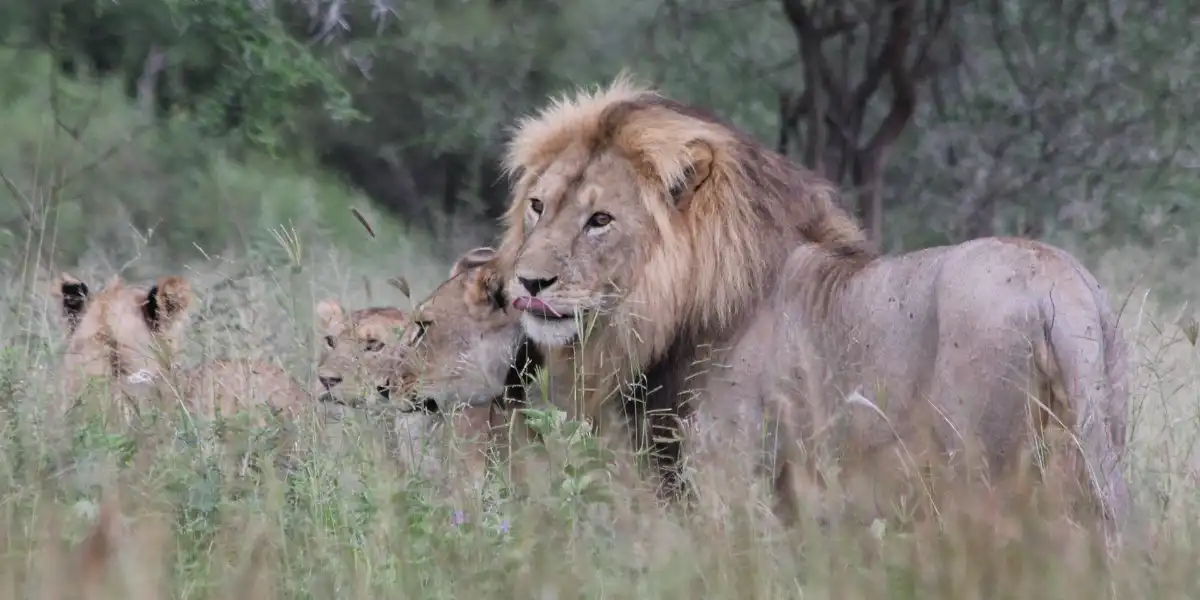
Tanzania has so much to offer with its vast wilderness areas situated in East Africa. The well-known Northern circuit contains Kilimanjaro National Park, the setting for Africa's highest peak, and the Serengeti National Park plains, the "big five" game animals (elephant, lion, leopard, buffalo, and rhino). Travelers who desire to partake in activities like guided walking tours, fly-camping, and boating would benefit greatly from the Southern safari circuit.

The core of Tanzania's northern safari route is Serengeti National Park. The wildebeest migration, which includes 2 million wildebeest, zebras, and gazelles, is one of the most incredible natural spectacles in the world. There are few safari locations where lions and cheetahs are so obvious, yet big cats are never far away. A safari in the Western Corridor or Mara River region gives a more secluded experience, but the Seronera area might occasionally feel a little crowded.

2. The Ngorongoro Conservation Area
The Ngorongoro Conservation Area, which is situated between the Serengeti and Lake Manyara, is another excellent location in Tanzania to see wildlife. The Ngorongoro Crater, the biggest intact volcanic caldera in the world, is its most prominent feature. The Ngorongoro crater has the highest concentration of lions anywhere in the world. Numerous black rhinos are another characteristic of the region. Over half of the species that live in the Crater are wildebeests and zebras, with the remainder being leopards, hyenas, Thomson's gazelles, buffaloes, and cheetahs.
The best way to explore the Ngorongoro Conservation Area is to embark on a guided safari. The best place for bird watching is near Lake Magadi, where groups of flamingos congregate in the shallows. Hippos are pleased to spend the day submerged and the evenings grazing on the adjacent grass.

Mount Kilimanjaro is the highest free-standing mountain in the world (5,895m), and Tanzania's most iconic image. Kilimanjaro, a UNESCO World Heritage Site, was formed by volcanic movement along the Rift Valley over 1 million years ago. Mount Kilimanjaro is a popular destination in Tanzania for adventure enthusiasts and professional climbers. Many visitors only make it halfway up the mountain. Even a few hours of hiking can yield breathtaking views of the park below. Mount Kilimanjaro can be climbed at any time of year, but the best season is from late June to October, during the dry season.

4. Zanzibar Beaches & Stone Town
Known for its stunning beaches, the island of Zanzibar, also known as Unguja, is a popular holiday destination in Tanzania. Visitors will discover beautiful white sand, clear shallow water, and traditional boats lining the coast in addition to varying surf conditions depending on which side of the island they are on. The pleasantly warm waters and protective reefs make for the ideal swimming experience. Though it is a popular beach vacation spot, Zanzibar offers much more. A world-class diving destination is Mnemba Atoll. The centre of Zanzibar is home to Stone Town, a historic city distinguished by old Arabian townhouses, narrow alleys, and a bustling harbor. Swahili, Arab, and Persian civilizations all coexist in Stone Town. Many of the homes' beautifully carved, bras-studded wooden doors will catch the attention of visitors.

The landscape of Lake Manyara National Park includes forest, woodland, grasslands, Rift Valley soda lake and swamps. Water covers two-thirds of the park, and Lake Manyara is home to thousands of flamingos and other diverse bird life at certain times of the year. The large population of elephants, tree-climbing lions, and hippos that can be seen at a much closer range than in other parks is the highlight of Lake Manyara Park. This park also has the world's highest concentration of baboons. The most popular activities in Lake Manyara National Park are wildlife drives, canoeing (when the water levels are high enough), mountain bike tours, and bird watching.

Ruaha National Park, Tanzania's largest, is home to a staggering number of elephants and giraffes. In fact, Ruaha National Park is also known as Giraffe Park. There are several packs of African wild dogs, as well as 15-20 pride of lions, leopards, and cheetahs. If you're most interested in these graceful animals but also want to see the rare lion, a safari in Ruaha National Park is a great option. Birdwatchers can enjoy over 400 species of birds that are not found in northern Tanzania, and photographers will appreciate the Great Ruaha River, spectacular gorges, and majestic trees. With fewer tourists, you can have a more authentic experience while exploring Tanzania.

Tarangire National Park has one of the highest concentrations of migratory wildlife during the dry season (July to September). The lagoons are teeming with wildebeest, zebra, buffalo, impala, gazelle, hartebeest, and eland. The park is also famous for its large elephant population and the baobab trees that dot the grassy landscape. Tarangire National Park is ideal for birdwatching, with over 300 species recorded. Buzzards, vultures, herons, storks, kites, falcons, and eagles are among the species.

8. Lake Natron
Lake Natron is one of the world's most incredible attractions. Lake Natron's waters are dark red in colour due to high pH levels, chemical makeup, and heavy evaporation. There aren't many animals in or around Lake Natron because it is made up of very saline water and the water temperature is hot. It is East Africa's only known breeding ground for lesser flamingos. Ol Doinyo Lengai, which means "Mountain of God," towers over this strangely beautiful scene. You can climb this active volcano if you're feeling adventurous.

One of the best places to visit in Tanzania is the vast wilderness of Nyerere National Park (formerly Selous Game Reserve). Visitors are restricted to the area north of the Rufiji River. This Nyerere region contains extensive open grassland, woodlands, rivers, hills, and plains. Game drives are typically conducted along a chain of lakes, which serve as a hunting ground for opportunistic lions waiting for thirsty animals to come to drink. Boat trips on the stagnant Rufiji River are a must-do during any visit. Expect close encounters with gigantic crocodiles as well as dodging an incredible number of hippos. Elephants, hippos, and rhinos can be found here, as well as buffalo, antelope, giraffe, warthog, wildebeest, lion, leopard, and cheetah. Over 350 species of birds have been recorded in the Selous.

10. Gombe Stream National Park
Gombe Stream National Park is primarily for those looking to get off the beaten path and see chimps. This is one of Tanzania's smallest national parks and is well-known for Jane Goodall's work. This British researcher arrived in 1960 to study wild chimps, and her work evolved into the world's longest-running behavioral research program of its kind. Guided walks take visitors into the forest to see chimps in their natural habitat. The park is home to a variety of primates and mammals. The tropical forest is home to over 200 bird species, including barbets, starlings, sunbirds, crowned eagles, kingfishers, and the palm-nut vulture.
Tanzania, a country in East Africa with rich wilderness areas, has a lot to offer. The well-known Northern circuit includes the Serengeti National Park plains, home to the "big five" game animals (elephant, lion, leopard, buffalo, and rhino), and Kilimanjaro National Park, the setting for Africa's highest peak. The Southern safari circuit would be extremely helpful for tourists who want to engage in activities like led walking tours, fly-camping, and boating.
